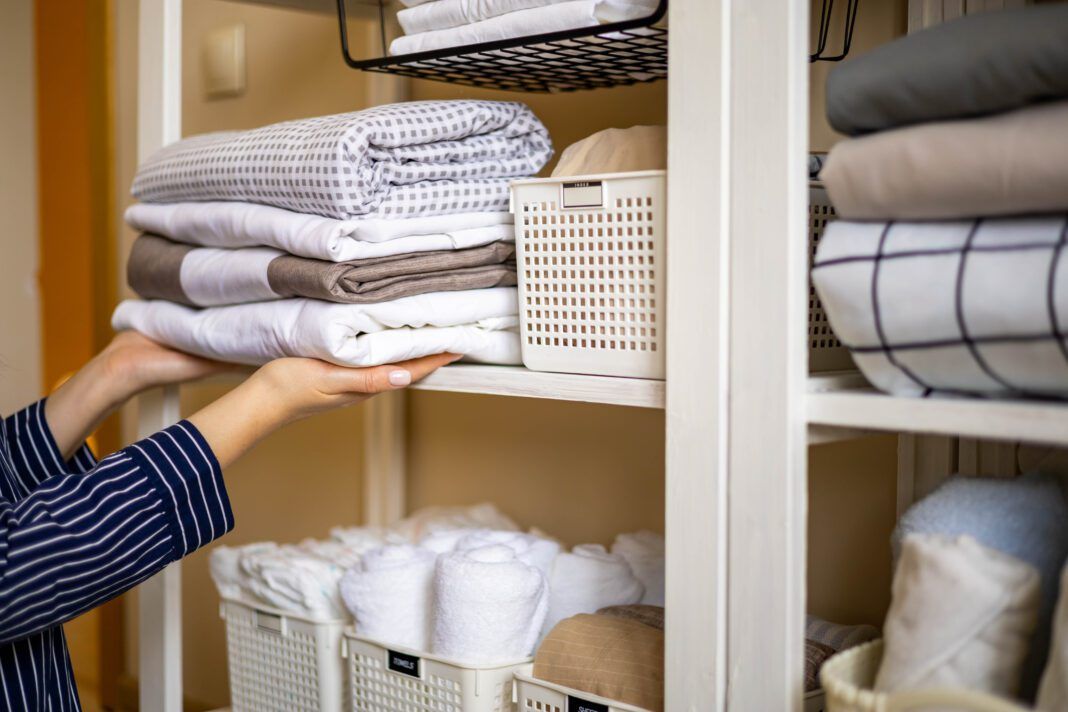Organizing your linen closet is easier than you think
Organizing (or even opening) your linen closet may often seem like a daunting task, but just picture it: all of your sheets and towels perfectly folded and placed in matching baskets and bins, relayed into categories that best suit your household.
The dream is in fact a reality—and even a successful career—for professional organizer Alyssa Trosclair with Emend, LLC, who tackles this particular organizational feat in a two-part process to make the task more therapeutic and less daunting. Here’s how she does it:
Step 1: Clean out the clutter
If you have an alarming amount of sheets and towels stuffed into your linen closet, you’re not alone. Trosclair says that in her experience, this is very common.
“I often have to have an intervention with my clients specifically for sheets and towels,” she says. “A great way to start the editing process is by getting rid of all incomplete sets of sheets.”
When considering how many sets to keep, Trosclair advises to think about how we change our sheets. “Do you have one set that’s put right back on the bed after washing? Or two sets that rotate out, with one on the bed and one in the closet?” she asks. “Either way, you don’t need six extra sets.”
Likewise, the biggest issue Trosclair sees with towel disorganization is people trying to keep too many. It’s common for her clients to keep old towels under the crutch of cutting them up to use as rags one day. While this may very well happen, she recommends setting a realistic limit on rags and donating the rest to a shelter.
“Just because you’ve accumulated a lot of things over the years doesn’t mean you have to keep them all,” she says. “Pick your favorites and enjoy a more roomy, organized linen closet.”
Step 2: Organize and categorize linens
Once the clutter is clear, choose items that are used the most and prioritize their placement by storing them on a shelf whose height reaches somewhere between your eyes and knees.
“Store things you don’t use as much up high or down low,” says Trosclair.
Then comes the categorization process. Trosclair notes that sheets are typically categorized by size, but they can also be arranged according to the room in which they’re used.
“I also recommend keeping sheet sets stored inside of their matching pillow case to keep sets together and easy to grab,” she says.
For a uniform look that’s functional and stylish, Trosclair suggests investing in matching bins or baskets.
“Consider using a bin or basket with no lid,” she says. “Fabric needs to breathe, so keeping it in a closed container for a long period of time may deteriorate the fabric.”
Although vacuum-sealed bags are commonly marketed as a space-saving device, Trosclair warns against them for long-term storage. “If you’re storing blankets but will pull them out each winter, they should be fine in space bags,” she says. “If you’re storing blankets never to be used again, you might be disappointed when you open the bag in 10 years.”
To ensure your closet remains in this glorious state, keep these tips in mind after organizing. When it’s time for spring cleaning, you’ll thank yourself.
Find more tips and trends for your home by following along on Instagram at @inregister.












